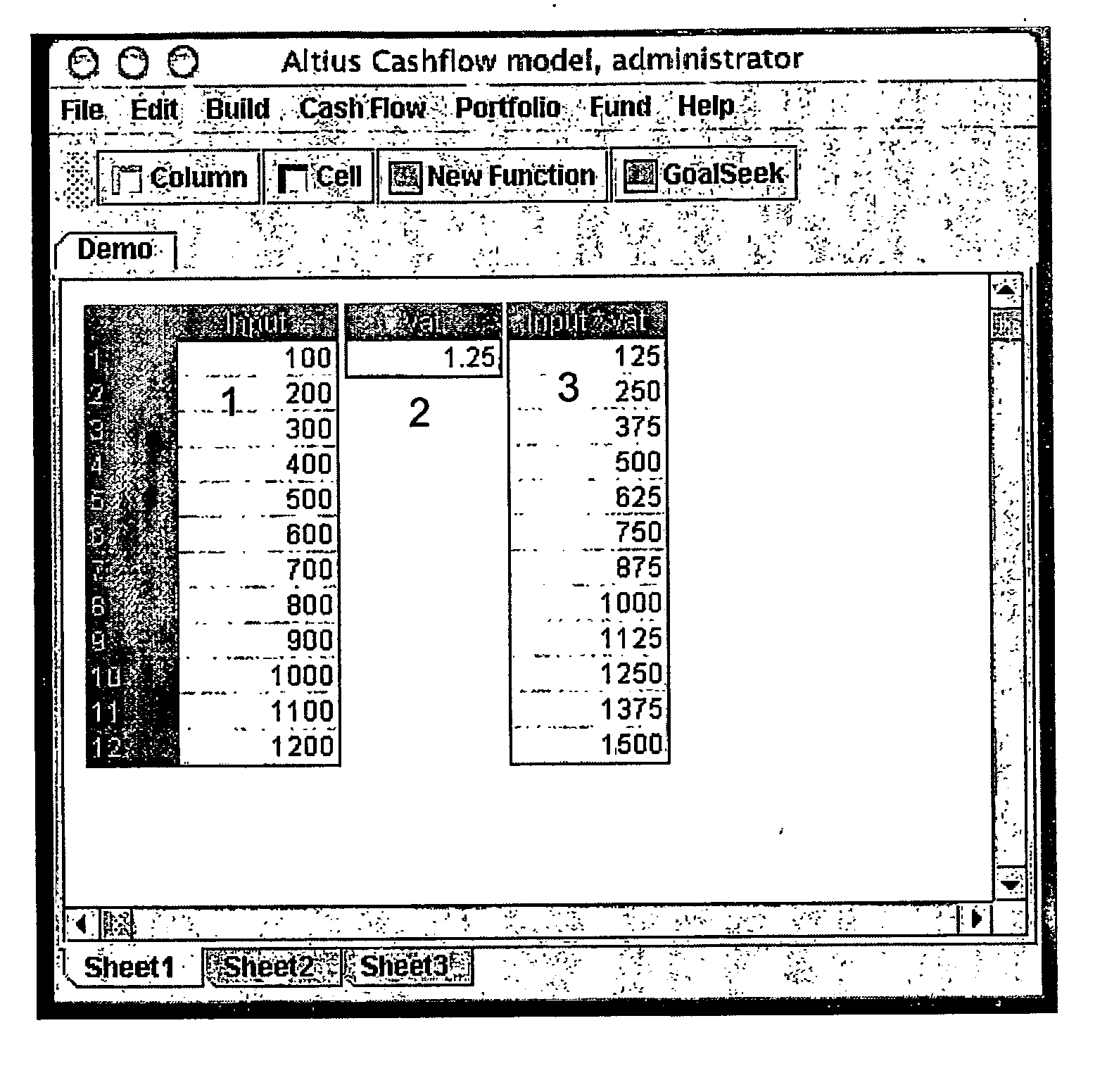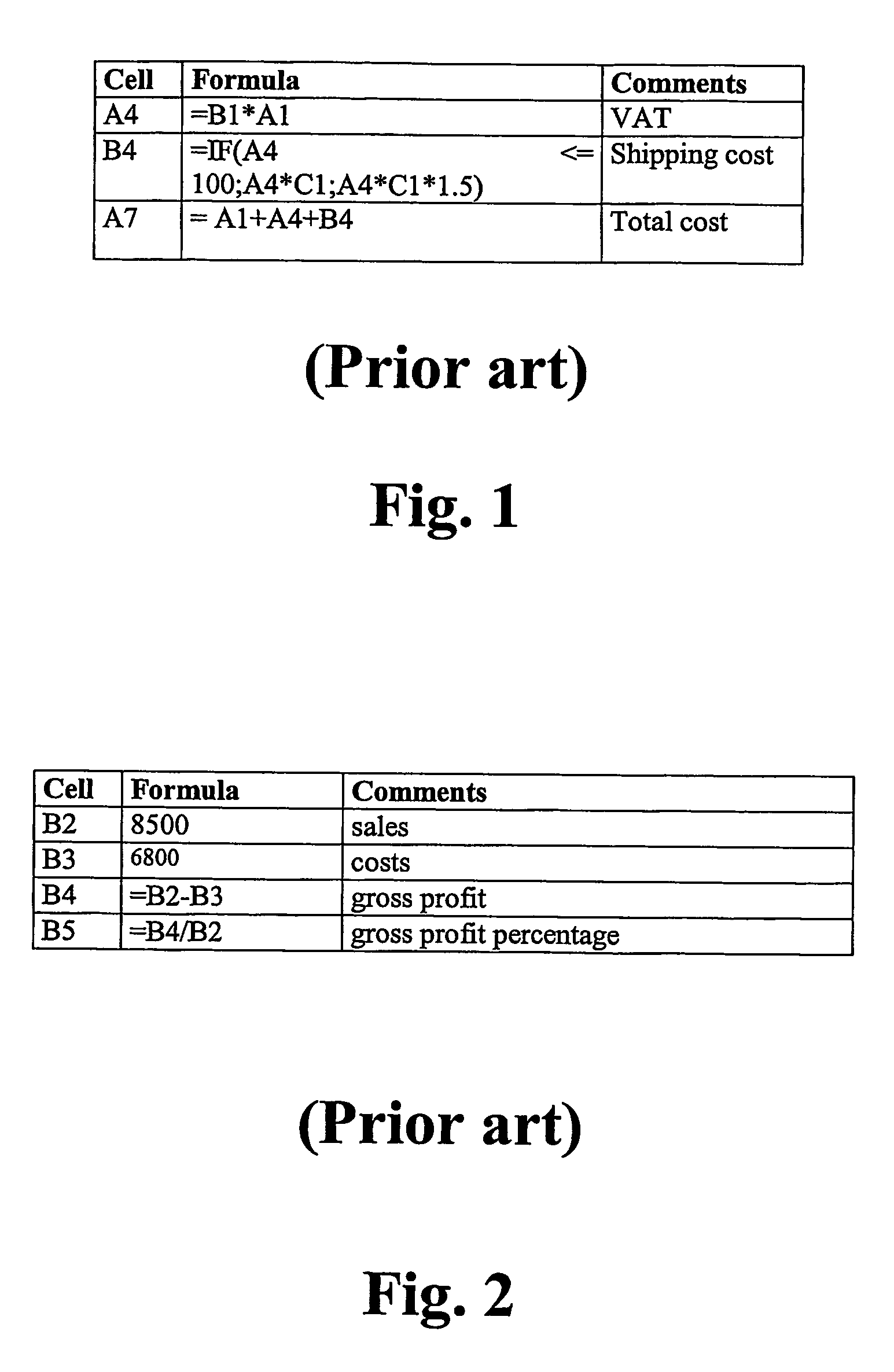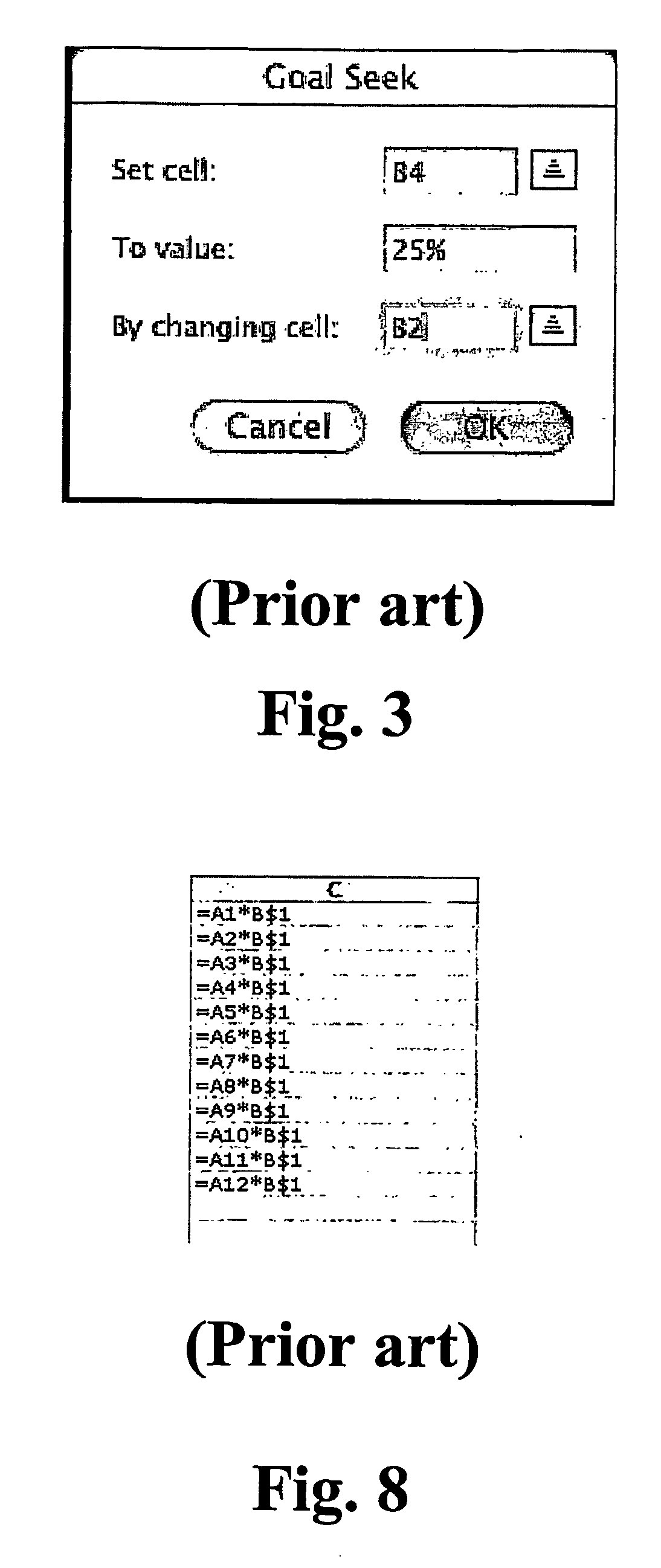Electronic Mathematical Model Builder
a mathematical model and builder technology, applied in the field of information processing by digital computers, can solve the problems of manual preparation of spreadsheets, slow process, and inability to meet the requirements of data entry,
- Summary
- Abstract
- Description
- Claims
- Application Information
AI Technical Summary
Benefits of technology
Problems solved by technology
Method used
Image
Examples
Embodiment Construction
[0095] The description in this paper relies on technical terms used in the subjects of object-oriented programming and specially Java programming. For an overview, see e.g., Ken Arnold, James Gosling & David Holmes, The Java Programming Language Addison-Wesley 2000, 3'rd edition ISBN 0-201-70433-1
[0096] The embodiment illustrated in the appended figures is programmed in the programming language Java and the system is running on the Java platform. Other programming languages could have been used for the development (e.g. C++ or C#) for a specific platform (e.g. Windows XP or Mac OS).
[0097] As shown in FIG. 4, the illustrated embodiment of the present invention includes a spreadsheet system having a user interface built of Java graphical user interface components (e.g. windows, drop down menus (4.1), toolbars (4.2), buttons, tabbed panes (4.3), labels, scroll bars etc. (4.4)). In operation, the system provides a number of cell-groups (grid views) organised in panels (FIG. 5a). The s...
PUM
 Login to View More
Login to View More Abstract
Description
Claims
Application Information
 Login to View More
Login to View More - R&D
- Intellectual Property
- Life Sciences
- Materials
- Tech Scout
- Unparalleled Data Quality
- Higher Quality Content
- 60% Fewer Hallucinations
Browse by: Latest US Patents, China's latest patents, Technical Efficacy Thesaurus, Application Domain, Technology Topic, Popular Technical Reports.
© 2025 PatSnap. All rights reserved.Legal|Privacy policy|Modern Slavery Act Transparency Statement|Sitemap|About US| Contact US: help@patsnap.com



